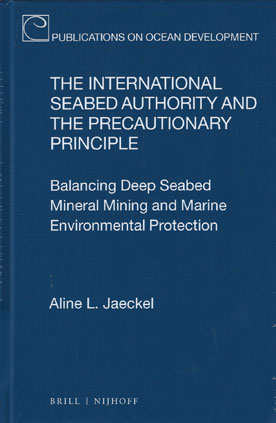
With the transition to the commercial-scale exploitation of deep seabed minerals, the International Seabed Authority’s obligation to protect the marine environment is being tested.
In The International Seabed Authority and the Precautionary Principle Aline L. Jaeckel provides the first in-depth analysis of the Authority’s work in regulating and managing deep seabed minerals.
This book examines whether and to what extent the Authority is implementing the precautionary principle in practice. This includes the development of adequate environmental protection standards as well as procedural safeguards and decision-making processes that facilitate risk assessment and risk management. In doing so, the author offers an insightful example of how the precautionary principle can be translated into a practical management tool.